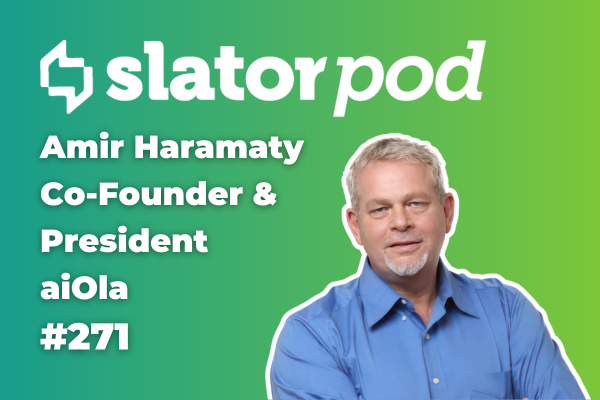The rise of voice-powered technologies has transformed the way businesses operate. From call centers to healthcare, manufacturing to financial services, spoken interactions are at the heart of frontline workflows. Employees use speech to complete tasks, record observations, update records, and interact with customers. Yet, with this rise in speech-based operations comes an urgent challenge: how to protect sensitive information in real time.
Enter real-time spoken data masking—an advanced capability designed to ensure that confidential details such as credit card numbers, medical records, addresses, or personal identifiers are automatically protected the moment they are spoken. Unlike traditional data protection methods that secure information after it has been collected, spoken data masking addresses privacy and compliance challenges at the source.
In this article, we’ll explore what real-time spoken data masking is, why it matters, the technology behind it, the industries that rely on it most, and how aiOla has uniquely positioned itself to lead this space with unmatched precision and enterprise capabilities.
What Is Real-Time Spoken Data Masking?
At its core, real-time spoken data masking is the process of identifying and obfuscating sensitive information the moment it is captured through speech. Instead of storing or transmitting exposed data, the AI system instantly replaces it with anonymized tokens, ensuring that no unauthorized individual can access confidential details.
The primary purpose of this technology is to protect individuals’ privacy and organizations’ compliance obligations. By masking your company’s sensitive spoken data instantly, you can continue to leverage AI-driven transcription, workflow automation, and analytics without compromising security.
Real-time spoken data masking is not simply a compliance checkbox—it’s the foundation of trust in your voice-led workflows.
Why Is Real-Time Spoken Data Masking Important?
The world is moving toward a voice-first future, but privacy and data security remain non-negotiable. Regulations such as HIPAA, GDPR, and PCI-DSS require strict handling of sensitive data. A single exposure of spoken personal information can lead to lawsuits, reputational damage, and multimillion-dollar fines.
Beyond compliance, there’s also customer trust. If a patient, customer, or client doesn’t feel safe sharing information verbally, organizations risk damaging relationships. Real-time masking enables confidence in voice-led workflows by ensuring that your sensitive details are never exposed.
This technology ensures you don’t have to choose between innovation and security—you can have both.
The Problem with Traditional Data Protection
Most enterprises today rely on post-processing to secure sensitive information. For example:
- A call recording is made, stored, and only later scrubbed for sensitive details.
- A transcription is generated, and sensitive data is then redacted after-the-fact.
- Employees are trained to manually avoid documenting confidential information.
The issue? By the time traditional protection kicks in, the exposure has already occurred. Sensitive data may have been stored, transmitted, or even accessed in its raw form. This creates risk at every step of the process.
Traditional systems also struggle with accuracy—generic ASR (Automatic Speech Recognition) often misses industry-specific jargon or misidentifies numbers and terms in noisy environments. This means masking systems either underperform or over-mask, reducing data usability.
The Technology Behind Real-Time Spoken Data Masking
Real-time spoken data masking relies on several advanced AI capabilities working together:
- Automatic Speech Recognition (ASR) with enterprise-grade accuracy – Unlike consumer-grade ASR, enterprise systems must maintain 95%+ accuracy across dialects, accents, and noisy conditions. aiOla achieves this with an acoustic adaptive AI layer that ensures performance in real-world environments.
- Keyword Spotting & Entity Recognition – AI identifies sensitive patterns (e.g., a 16-digit card number) and industry-specific terms (e.g., medical codes) without manual rule creation. Detects sensitive terms like credit card numbers, Social Security numbers, or health-related identifiers.
- Zero-Shot Learning – aiOla uniquely applies zero-shot learning, meaning the AI can recognize sensitive terms and jargon it has never explicitly been trained on. This eliminates the need for retraining and makes the system agile across industries. Allows the system to adapt without retraining, catching sensitive data even if it hasn’t “heard” it before.
- Speech-to-Workflow Integration – Spoken masking doesn’t exist in isolation. The masked data feeds directly into workflows, enabling tasks to be completed securely, from updating patient charts to processing transactions. Ensures data masking fits seamlessly into existing enterprise processes.
- Encryption & Tokenization – Data is not only masked but also encrypted, ensuring multiple layers of protection.
- Jargon recognition: Understands industry-specific vocabulary to ensure masking doesn’t miss nuanced details.
Together, these components deliver an enterprise-grade solution that secures spoken interactions without slowing workflows down.
Industries That Need Real-Time Spoken Data Masking the Most
While virtually every industry can benefit from real-time spoken data masking, here is a break down of the ones that can benefit from it the most:
Call Centers
Customer service is speech-driven, with agents handling personal data daily. Masking protects customer trust while ensuring PCI-DSS compliance during payment processing.
Healthcare
Doctors, nurses, and staff often dictate patient details aloud. Spoken masking ensures compliance with HIPAA while allowing providers to maintain efficient workflows.
Financial Services
Banking and insurance rely on secure verbal exchanges. Real-time masking helps prevent identity theft and fraud while ensuring compliance with stringent regulations.
Aviation
Pilots, ground crew, and maintenance staff rely on verbal communication for safety-critical workflows. Masking ensures compliance without disrupting operations or exposing sensitive passenger data.
Automotive & Manufacturing
Workshops and production lines rely on hands-free, voice-led workflows. Masking sensitive operational and customer data ensures compliance without slowing productivity.
Real-World Benefits of Real-Time Spoken Data Masking
Real-time spoken data masking protects organizations while enabling them to extract maximum value from speech. Let’s explore its benefits:
- Enterprise-Grade Security: Sensitive details are protected the moment they’re spoken.
- Compliance Simplified: Meets GDPR, HIPAA, and PCI-DSS standards without additional workflows.
- Hands-Free Trust: Frontline workers can focus on their jobs without worrying about exposing confidential data.
- Operational Efficiency: Masking integrates into workflows without slowing them down.
- Improved Accuracy: With jargon recognition and acoustic adaptation, masking is precise, avoiding costly over-masking.
- Scalability: Works globally, across multiple languages and dialects.
- Data Usability: Organizations can still leverage anonymized speech data for analytics and insights.
Challenges of Real-Time Spoken Data Masking
Like any emerging technology, real-time spoken data masking faces challenges, such as:
- Complexity of Language: Accents, dialects, and code-switching make recognition more difficult.
- Balancing Security with Usability: Over-masking can strip data of its usefulness, while under-masking risks compliance breaches.
- Integration Hurdles: Enterprises with legacy systems may face technical challenges embedding real-time masking into workflows.
- Awareness Gap: Many organizations still underestimate the risks of unmasked spoken data.
While these challenges exist, advancements like aiOla’s zero-shot learning and acoustic adaptive AI are rapidly reducing them.
How aiOla Does It Differently
Most AI companies treat speech as input to be transcribed. aiOla, however, treats speech as the trigger for workflows, making it the only solution that moves beyond transcription into speech-to-workflow execution.
Where other systems require extensive retraining to adapt to new environments, aiOla applies zero-shot learning to deliver 95%+ precision out-of-the-box, even with industry jargon, noisy conditions, and multi-speaker interactions.
Crucially, aiOla’s real-time spoken data masking ensures sensitive details are never exposed, while still allowing organizations to generate structured, high-quality data from the frontline. aiOla’s Whisper-NER model integrates named entity recognition (NER), which automatically masks sensitive data as it is spoken in real-time. WhisperNER is trained and prompted with NER labels, so the transcription accuracy with corresponding tagged entities is unmatched in its accuracy. For example, imagine an employee in a crowded office or area repeating a social security number or credit card number- the model is aware of this and immediately masks it when inputting the information into the system. This dual advantage—security plus workflow enablement—is why aiOla stands alone in the market.
Final Thoughts on Real-Time Spoken Data Masking
Real-time spoken data masking is no longer a “nice to have”—it’s an enterprise necessity. By securing sensitive information at the source, organizations can maintain compliance, build customer trust, and unlock the power of speech-driven workflows without risk.
Interested in learning how aiOla can keep your organization’s data more secure in real time? Book a demo with us today!













